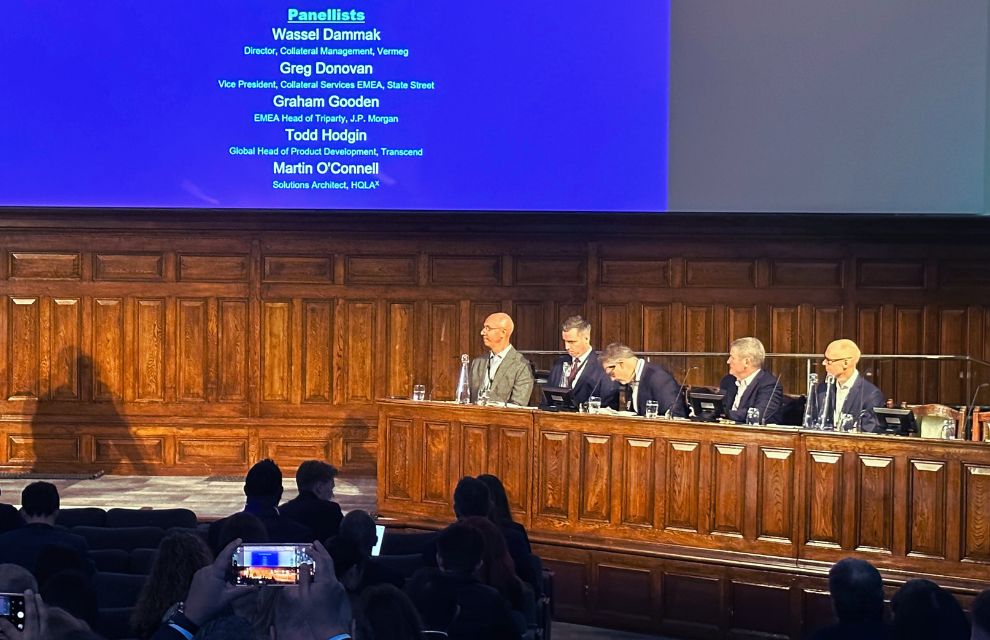“The potential of technology is tremendous,” said Martin O’Connell, solutions architect at HQLAx at the Securities Finance Symposium in London. “It’s not so much about redefining collateral management; it’s about absorbing these technologies within existing collateral management processes because the business case makes sense.”
Moderated by Glenn Handley, consultant and founder of SecFin Solutions, ‘The collateral era’ panel discussed the evolving landscape of collateral management and related regulation.
Introducing the topic of tokenisation, Handley says: “If you think about it, it makes no sense to move these trillions of dollars of securities and cash around the world multiple times a day. Looking into the future, we have to do it differently.”
Greg Donovan, vice president of collateral services for EMEA at State Street, adds that the anticipated shift towards T+1 in Europe is adding pressure to mobilise collateral more efficiently.
Todd Hodgin, global head of product development at Transcend, believes that the environment will become more complex before it becomes more simple, and that immediate, industry-wide uptake of new solutions is not realistic.
“There’s going to be a variety of participants who are going to use traditional assets, settlement, and structures, while others will be very interested in this new technology, so for a period of time, you’ll need to have interoperability between both ecosystems,” he says. “Creating an environment where clients can easily transition between both ecosystems is something that drives us every day.”
On that note, Donovan adds: “Tokeinsation is fantastic. It’s a great use case, but it’s the scale of adoption that’s going to be key to this.”
Deploying an asset as collateral without actually moving the asset between custody locations can enhance liquidity and support the adoption of accelerated settlement, according to Donovan, but there is a need for industry collaboration to achieve widespread adoption.
He adds: “Until you arrive in a world where the issuance of the asset itself is on blockchain, there will have to be some sort of intermediation of non-on-chain assets.”
As EMEA head of triparty at J.P. Morgan, Graham Gooden sees a potential role for triparty agents as a facilitator to help broaden adoption.
“By integrating tokenised assets into triparty, you increase their utility through the ability to refinance and reuse across the collateral ecosystem,” he says. “Triparty already has the benefit of the network effect built up through many years of integration across markets and participants. Connecting the new technology to complement established market best practices is the quickest way to build momentum and help move the industry forward.”
The panel also discussed the impact of uncleared margin rules (UMR) on buy side firms, with Donovan noting that many entities rushed to comply without fully optimising their collateral processes, leading to inefficiencies.
“There was a bit of a rush in 2022 to comply, by which I mean: ‘I must set up a means of segregating my initial margin. I must have a process to calculate it. If that is ugly, if that is inefficient, that's okay, as long as it gets done this year.’”
However, Wassel Danmak, director of collateral management at Vermeg, believes that technology can help buy side firms better utilise their collateral management systems to fulfil UMR obligations, such as by identifying less liquid assets and modelling different stress scenarios.
He also highlighted the potential of artificial intelligence, from a simple chatbot to an AI agent that can do all the repetitive tasks of the collateral management space, including UMR compliance.
 Image: Black_Knight_Media
Image: Black_Knight_Media 